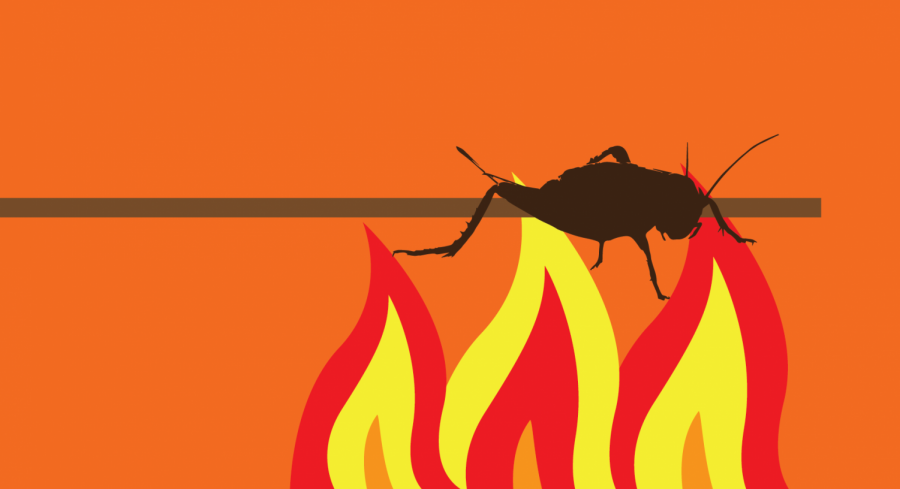Opinion | This Christmas, try roasting crickets over an open fire
Dec 10, 2019
Last updated on Dec. 18, 2019 at 10:05 p.m.
Its that time of year: Making gingerbread houses, the smell of peppermint candles and eating roasted chestnuts sounds about right. But what about decorating that gingerbread house with beetles, roasting termites over an open fire and cooking grasshoppers to make your stuffing a little more crunchy?
Have you ever thought about sprinkling a garnish of grasshopper flakes on your casserole? Or some cricket into your protein shake? Probably not, but after you hear about its positive impact on human health, you might want to replace the croutons in your salad with crickets.
As a society with Westernized thoughts on food, it might be time for us to try minced cockroaches in our burgers and worms in our quiches. Although this may not seem the most yummy choice of food, the rate of obesity in our country — 12th in the world — needs to be pushed lower.
In China, it is a common habit to eat larvae from beehives, and in Ghana, frying or roasting winged termites is exceptionally prevalent. As much as we might want to consider this trend unappetizing, several studies have shown what powerful benefits insects have to offer.
Get The Daily Illini in your inbox!
A 2018 study from the University of Wisconsin Madison found that subjects who consumed muffins and nutritional shakes made with dried, roasted cricket powder for breakfast experienced positive effects on gut microbiota, signifying the health benefits of incorporating insects into one’s meals.
Other health benefits insects provide include calcium, which helps with bone health, and vitamins like iron and manganese, which help combat obesity and related diseases.
Not only do insects provide health benefits to people, but they play a considerable part in conserving the environment. Insects are reported to emit fewer greenhouse gases than livestock like cattle. Countries all over Asia have been accustomed to this phenomenon for centuries, and it’s time we were, too.
Even our livestock could be fed with insects. Thanks to the relatively high protein content, insect-meal could replace between 25% and 100% of soymeal or fishmeal in animal feed, according to the Food and Agriculture Organization.
Growing up in Pakistan, red meat such as veal, capretto and others were my primary sources of protein, so insects don’t seem half bad.
Restaurants all over the U.S. have begun putting insects on the menu. From serving grasshopper sushi rolls to grasshopper tacos, different cuisines have incorporated the largely unappealing insects into their recipes. This can be credited to the rich culture behind individual dishes, or real interest in helping the environment and ourselves.
So let’s try incorporating the use of insects in our meals more, for the sake of our health and the environment. Although it may seem bizarre, and if you’re not that into protein, take the time to consider other factors entomophagy plays in society and the environment because, trust me, there is much more.
Neshmia is a sophomore in Media.






